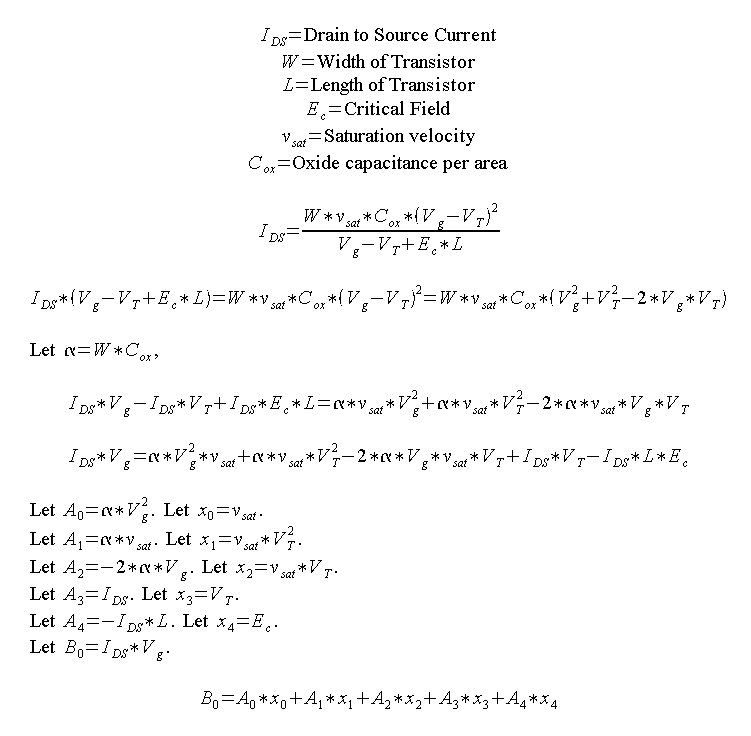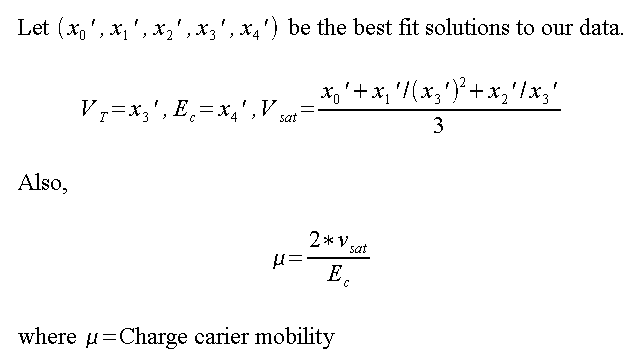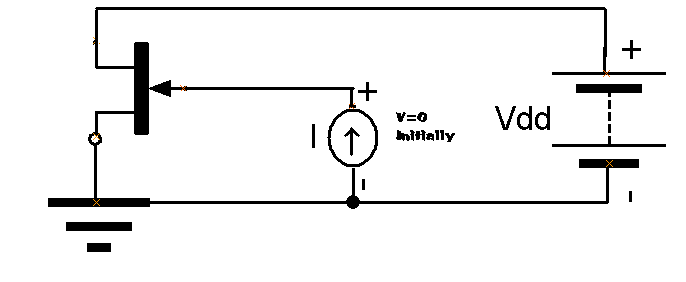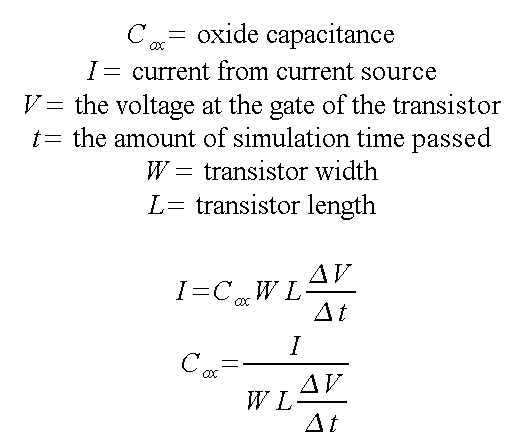To find the oxide capacitance, simply drive a known width, known length transistor with a current source. Tie the drain and source voltages to be appropriate to not have a body effect, and let the gate voltage have the appropriate starting condition.
The NMOS case is shown below:
The calculation for the ocide capacitance follows:
Then to find the other parameters, tie the drain, source, and gate voltages to bunches of different values and measure the drain source currents.


We then find the best fit values for the x's based on our data points for a particular Vd. After that, the rest can be quite simple....






